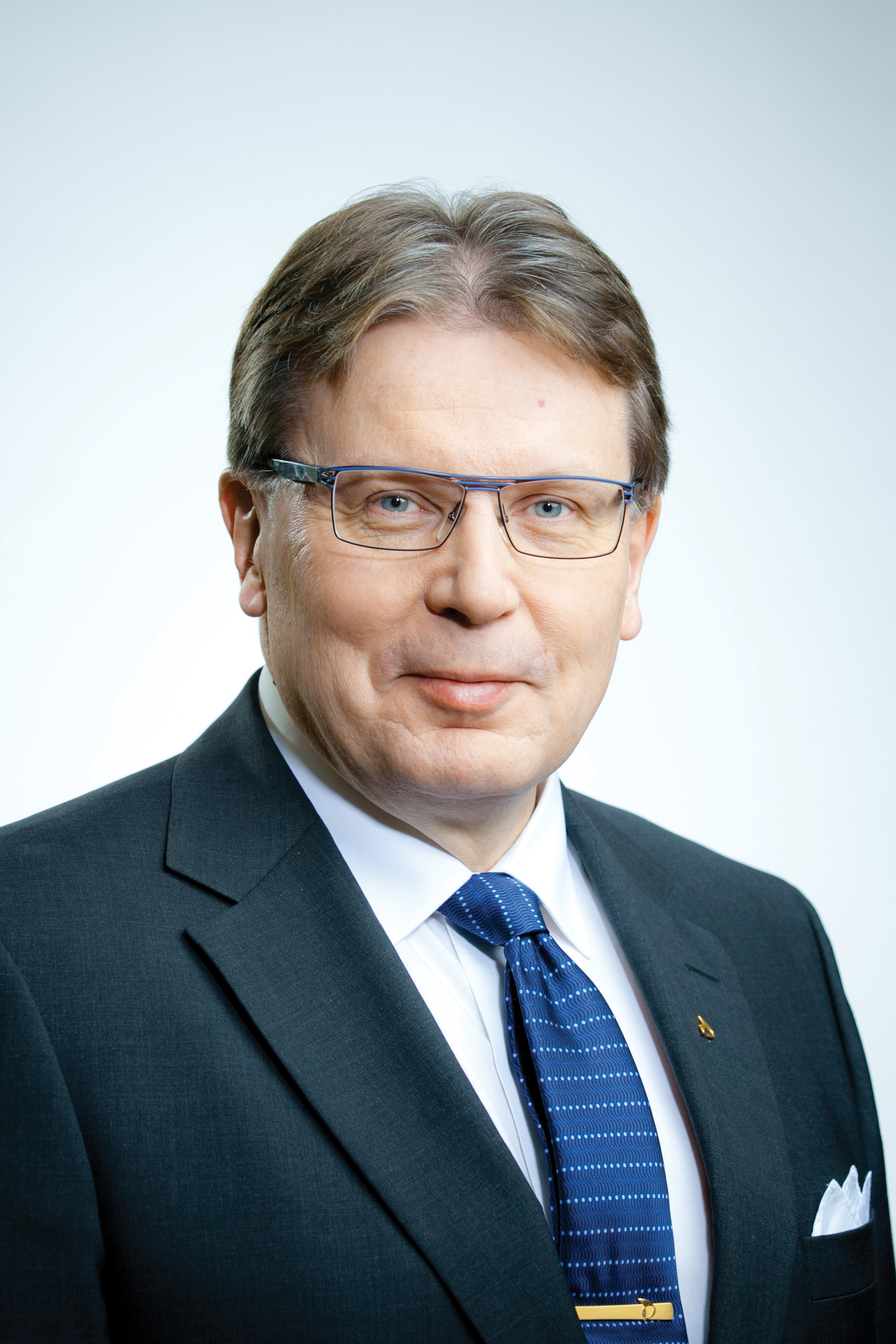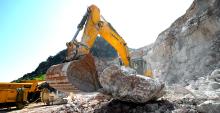
Metso CEO and president Matti Kahkonen explained how the company is evolving as Mike Woof reports.
Finnish crushing and screening specialist
CEO and president Matti Kahkonen said that Metso has been a multi-industry business for the last 14 years. The firm’s biggest divisions have been the joint construction and mining division and the pulp and paper business, with its automation sector being the smallest of the three. However he said: “Paper machines and crushing machines are very separate.”
This is the main reason for the demerger process and Kahkonen said: “Since its birth/creation in 1999, we have strongly developed the company and its offering. Today, Metso is big and diverse enough to be split into two. When you have a global company you need a certain size.”
The pulp and paper and power operations are now listed on the Finnish stock exchange as a separate entity and this is called Valmet and Kahkonen explained: “Metso will continue to develop mining and construction and automation.”
Metso is retaining its current branding, with new branding being used for Valmet and he said that the aim is to have two transparent and entirely separate companies, “…to focus on their own industries. We can concentrate on serving the mining, construction and oil and gas industries.”
Speaking at the end of last year he said that the demerger was proceeding as planned. “All assets and liabilities have been split and both companies have boards of directors appointed. There is a new management structure for both of us.”
Following the demerger process, Metso will be able to follow its new focus on key business segments. Kahkonen explained that under the former structure, there were several very different businesses and he said that for the board, this meant it was hard to give each as much attention as they’d wanted to. But he explained, “Now with two companies, the management can go much deeper into those companies, and we can be sure we’ll allocate money and resources in the right way.”
This approach will be a factor in delivering the best return on investment for customers and Kahkonen said that it will help to ensure clients run more profitable operations. He explained that the plan is to bring Metso into much closer alliances with its customers, working with them to maximise efficiency, productivity and profitability.
Metso’s long term targets are ambitious and the company has had successes even in the face of tough market conditions. Kahkonen said: “We are targeting an average 10% growth/year and we have been growing at 8-9% since 2009.”
One major focus will be on increasing the level of co-operation with its clients. Customers have a choice of services, starting with basic field services, for which there is strong competition from local players globally and which offers less potential for development. Instead the firm is keen to develop services that provide closer links with clients.
At present, services business accounts for 50% of Metso’s net sales. The company is keen to transition much of its customer base to service packages that also include rebuild solutions, as well as assistance with de-bottlenecking processes or delivering capacity improvements. Today, a growing percentage of Metso’s customer base opts for the full service lifecycle contracts, where the company can take over responsibility for processes for a defined period of time. This is an area where Kahkonen sees strong growth potential for the company and he said, “We might be paid on performance. It’d be in Metso’s interest to optimise an operation.”
At present, services business accounts for 50% of Metso’s net sales. The company is keen to transition much of its customer base to service packages that also include rebuild solutions, as well as assistance with de-bottlenecking processes or delivering capacity improvements. Today, a growing percentage of Metso’s customer base opts for the full service lifecycle contracts, where the company can take over responsibility for processes for a defined period of time. This is an area where Kahkonen sees strong growth potential for the company and he said, “We might be paid on performance. It’d be in Metso’s interest to optimise an operation.”
He continued, “The areas we can create demand in are for rebuilding or lifecycle contracts, particularly when we add in machine intelligence and automation. What the customers want is to get better production and the best cost/tonne and at the right product quality.”
This approach will be global too and he said, “In all countries we have investment needs for services.”
Metso’s business volumes are good at present, despite the poor economic conditions internationally and he explained, “2011 was an all-time high and we have said 2013-2014 will be the years of transition.” He continued: “It’s relatively stable now. It’s not growing and it’s not collapsing. There is a need for mining companies to maintain production. In 2015 and 2016 we expect some kind of growth, but it’ll not be like 2007 or 2008.”
The US equipment market remains sluggish. There is activity in the US but there is over-capacity, with a lot of quarrying facilities having scaled back their operations.
The firm has a strong foothold in emerging markets . China, where the company and its predecessors have been for 80 years already, is a market of particular significance at the moment for Metso. The company recently established a joint venture partnership with one of China’s major equipment manufacturers,
Through the Chinese joint venture with LiuGong, Kahkonen said that Metso has a strong potential to develop the market for mobile crushers in the country. He said that the machines will be available through the LiuGong distribution network, giving good potential market penetration. Kahkonen also said that the joint venture has the potential for a further partnership, if progress moves as he expects and if both companies are happy with the relationship.
Kahkonen said that Asia holds further potential for the company, with South-East Asia alone having a population of some 700 million and fast developing infrastructure needs. “Most probably we won’t build factories in those countries but we will grow our sales and service facilities there,” he said.
The firm has its own sales and service operations in Indonesia for example and he said, “They would get support from Singapore or China, the US or Finland, depending on the products.
India is another key Asian territory for Metso and Kahkonen said: “In India we’ve been investing a lot in the last few years. We have a factory in India and besides serving the local markets it is making some exports.”
The Brazilian facility is another important operation for the company and Kahkonen said: “Our Brazilian plant is the biggest site in the Metso group.” And he added that this well-established operation also covers key territories in Latin America, such as Chile and Peru.
Of the BRICs nations, Russia is the exception with regard to local manufacturing and Kahkonen said, “In Russia we’ve not invested yet. It’s a difficult market and is very volatile, depending on the oil and gas industry so we haven’t put an investment into manufacturing there as we can serve the market from Finland or China.”
But Africa also offers potential and he continued, “There are many opportunities in Africa. It’s a step by step process.” Metso already has a well-established position in South Africa with its own facilities and is also growing its presence in Botswana and Namibia. Some 40% of the company’s workforce is in developing countries and Kahkonen said: “Around half of our business comes from emerging markets today and there is the potential to increase service contracts there.”
Metso is in a strong position with its well-established global presence and its healthy financial state, with the option of buying other companies as a possibility. With regard to acquisitions Kahkonen said, “We are actively looking. We haven’t done a big one but we are looking at smaller acquisitions of €10-15 million. The risk profile is manageable and we can create a lot of growth. But we want to make sure organic growth is the key.”










